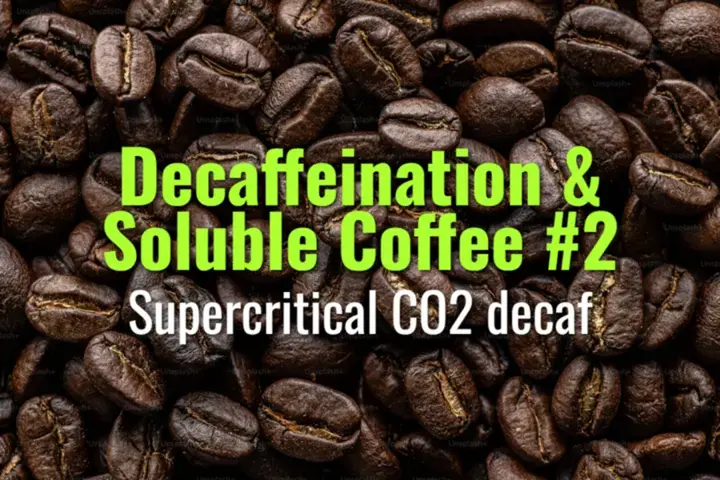Supercritical CO2 decaf
How the supercritical CO₂ process removes caffeine from green coffee beans using pressurized carbon dioxide, balancing efficiency and flavor preservation.
- Coffee Basics Nerds
- 2 min read
Article 2 of 12 in Decaffeination & Soluble Coffee/

Overview
- The supercritical CO₂ method is a modern, widely used decaffeination technique.
- Employs carbon dioxide under high pressure and temperature where it behaves like both a liquid and a gas (supercritical state).
- Efficiently extracts caffeine while leaving most desirable flavor compounds intact.
Step-by-Step Process
- Moisture Conditioning: Green beans are steamed or moistened to open pores and increase caffeine solubility.
- CO₂ Extraction: Beans placed in a pressure vessel (≈ 250–300 atmospheres, 65–75 °C).
- Supercritical CO₂ Flow: CO₂ acts as a selective solvent, binding caffeine molecules and diffusing them out of beans.
- Separation: Caffeine-rich CO₂ flows into a second chamber where pressure drops, releasing caffeine.
- Recirculation: CO₂ is recycled and reused in a closed-loop system.
- Post-Treatment: Beans dried and stabilized before packaging.
Advantages
- Selective Extraction: Targets caffeine more than flavor compounds → good preservation of aroma.
- Eco-Friendly: CO₂ is non-toxic, recyclable, and leaves no residue.
- Scalable: Suitable for industrial-scale decaf production.
Considerations
- Requires specialized high-pressure equipment (capital intensive).
- Slight flavor flattening can occur compared to untreated beans.
- Final product must still meet ≥97% caffeine removal standard (U.S. definition).
Summary
The supercritical CO₂ process decaffeinates coffee using pressurized carbon dioxide to selectively remove caffeine while retaining much of the bean’s flavor profile. Efficient, clean, and scalable, it is one of the most common decaf methods in both commercial and specialty sectors.